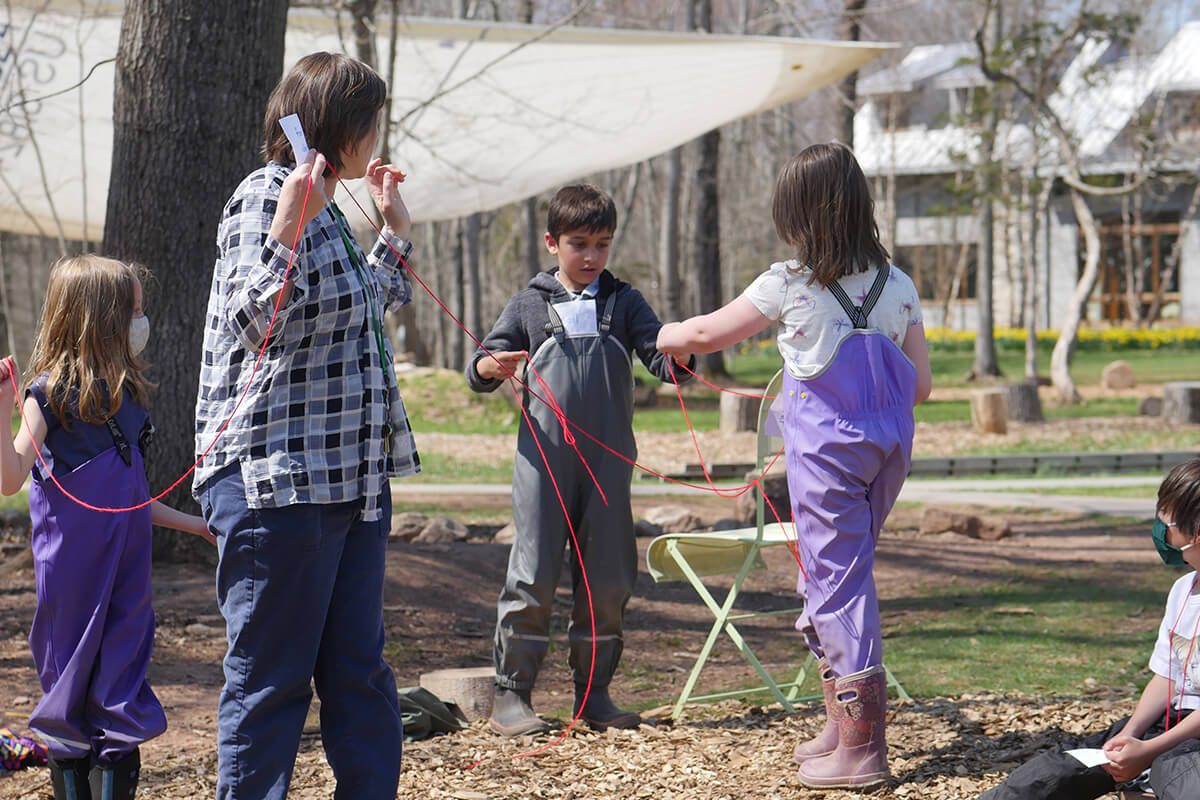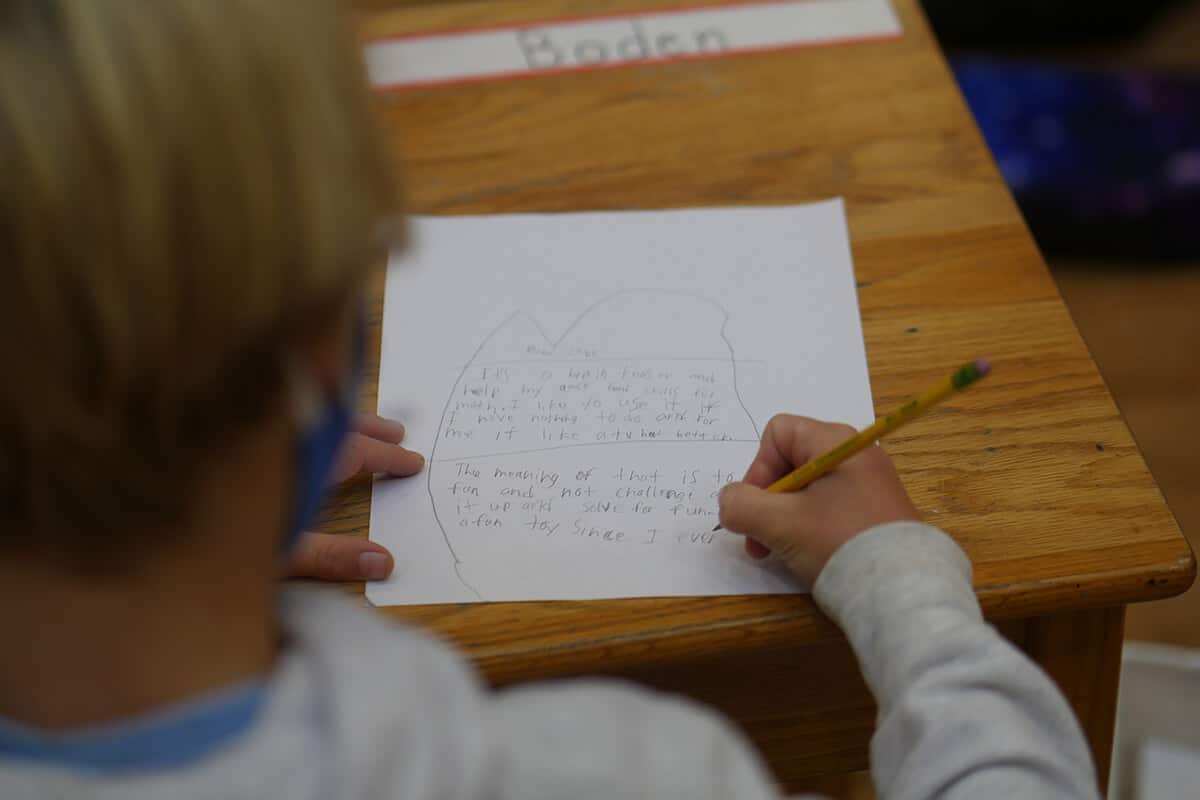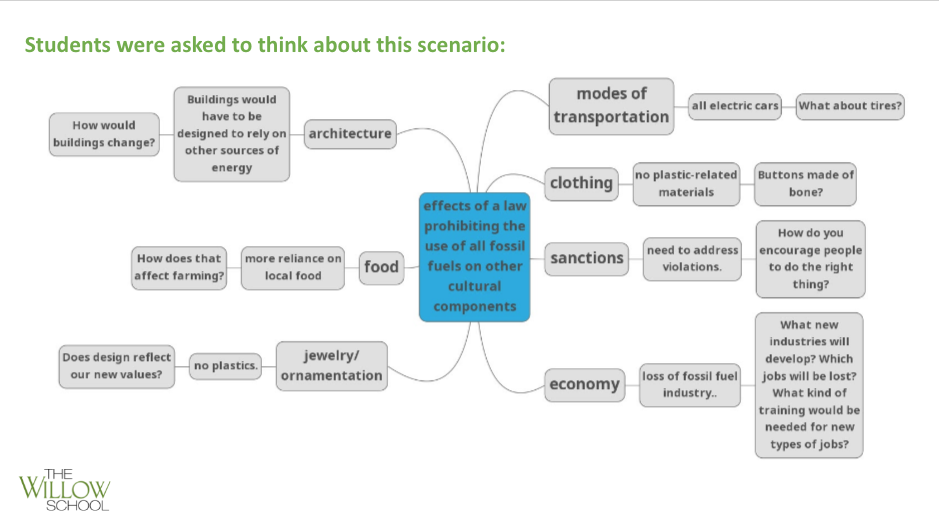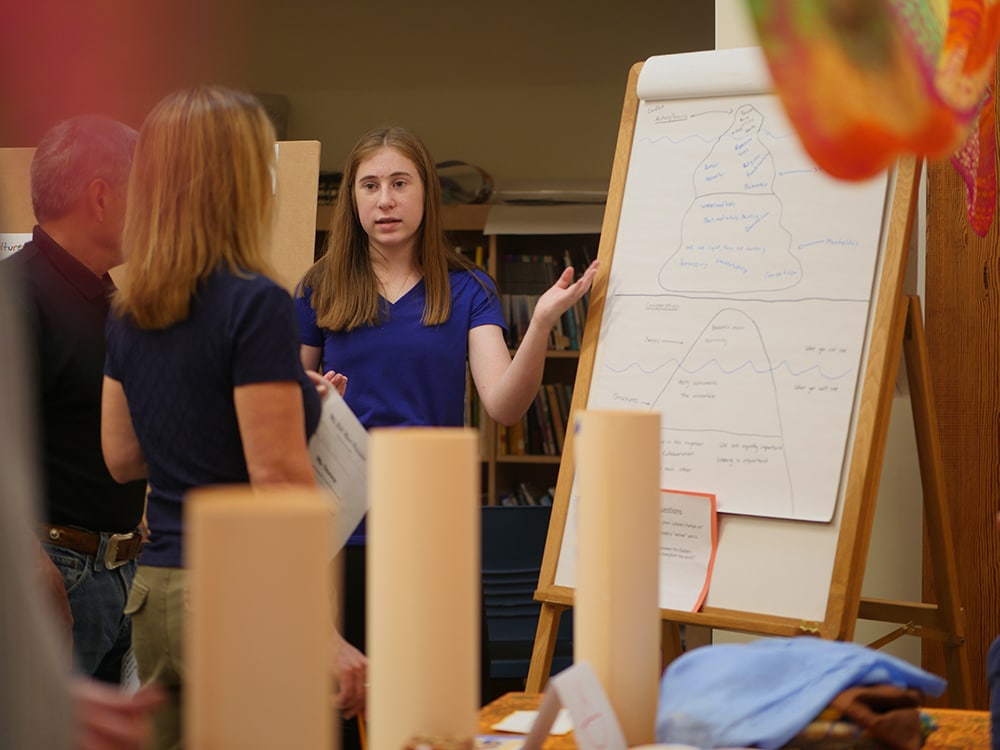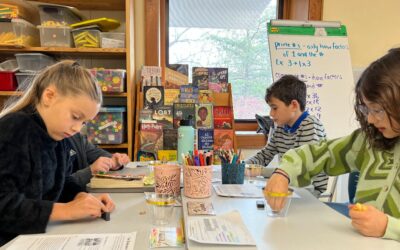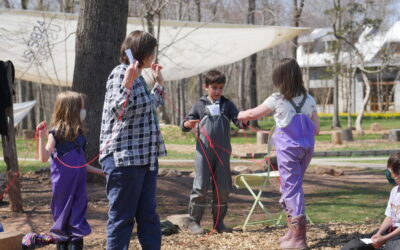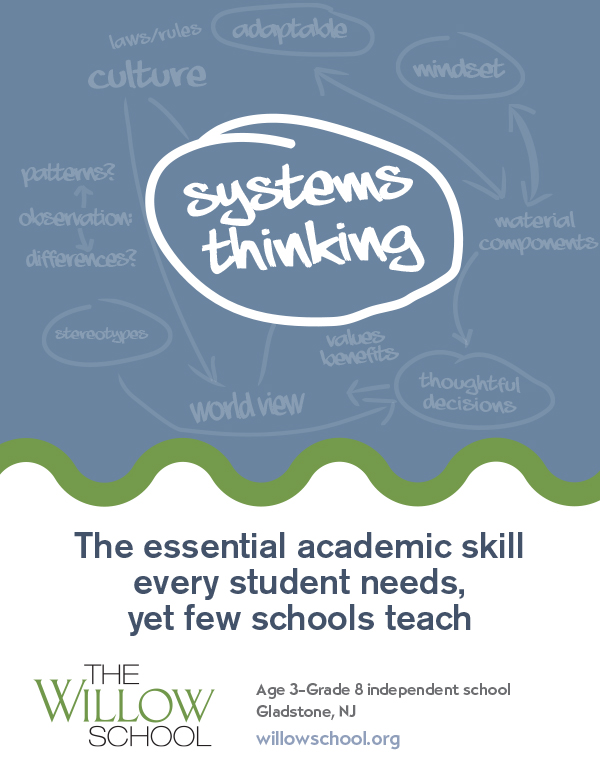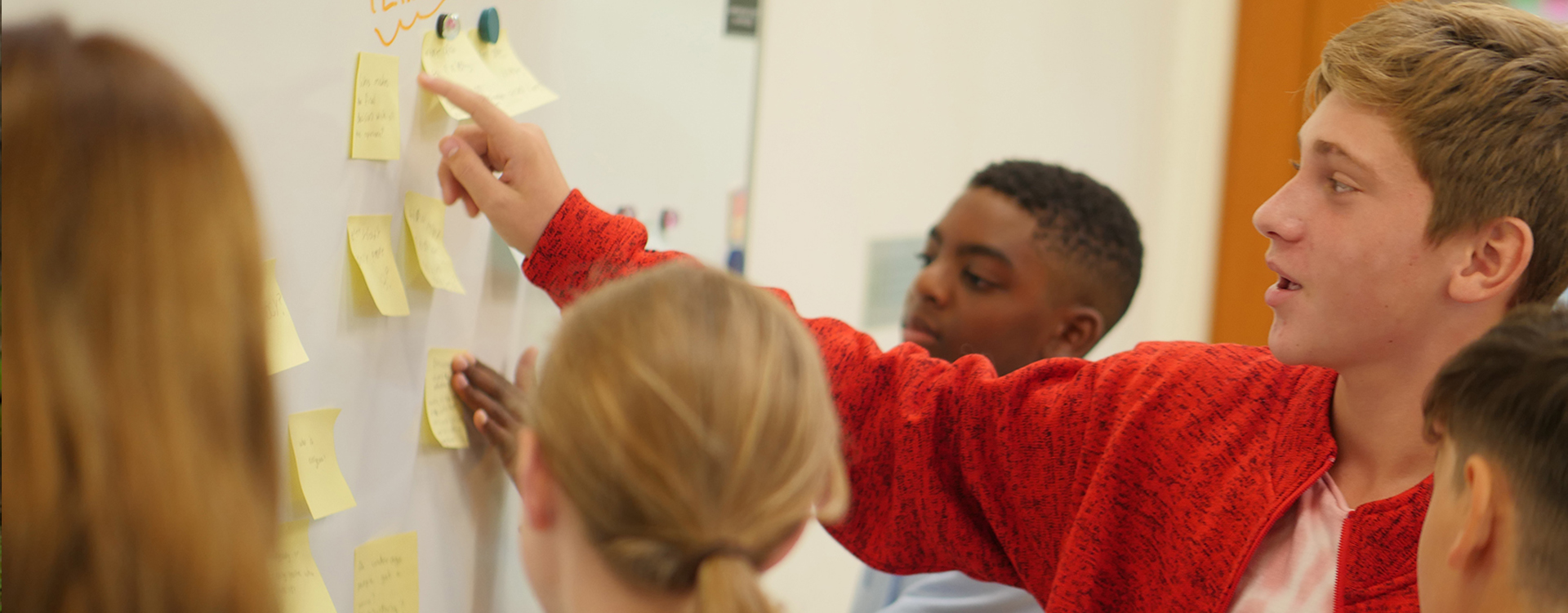
A deeper dive into our complex world
Systems Thinking is one of the most effective ways to help students understand a complex world and empower them to create positive change. At its simplest level, Systems Thinking teaches us that everything is interconnected and interdependent. This emphasis helps children understand cause and effect, nurtures curiosity, deepens self-discovery, and develops key skills like critical thinking, communication, observation, and analysis.
Willow pioneered the use of Systems Thinking in elementary and middle school to prepare students to become capable problem solvers and change-makers.
Our students regularly engage in interdisciplinary projects that challenge them to:
- Examine problems more completely before acting
- Make thinking visual and organize their thoughts
- Change their perspective and challenge their assumptions
- Analyze relationships and recognize interdependencies
- Identify patterns of behavior over time
- See the impact of the choices we make
- Solve problems without creating new ones
Here’s how Willow students practice Systems Thinking in our classrooms:
Dummy to Close First Accordion
Who Am I?
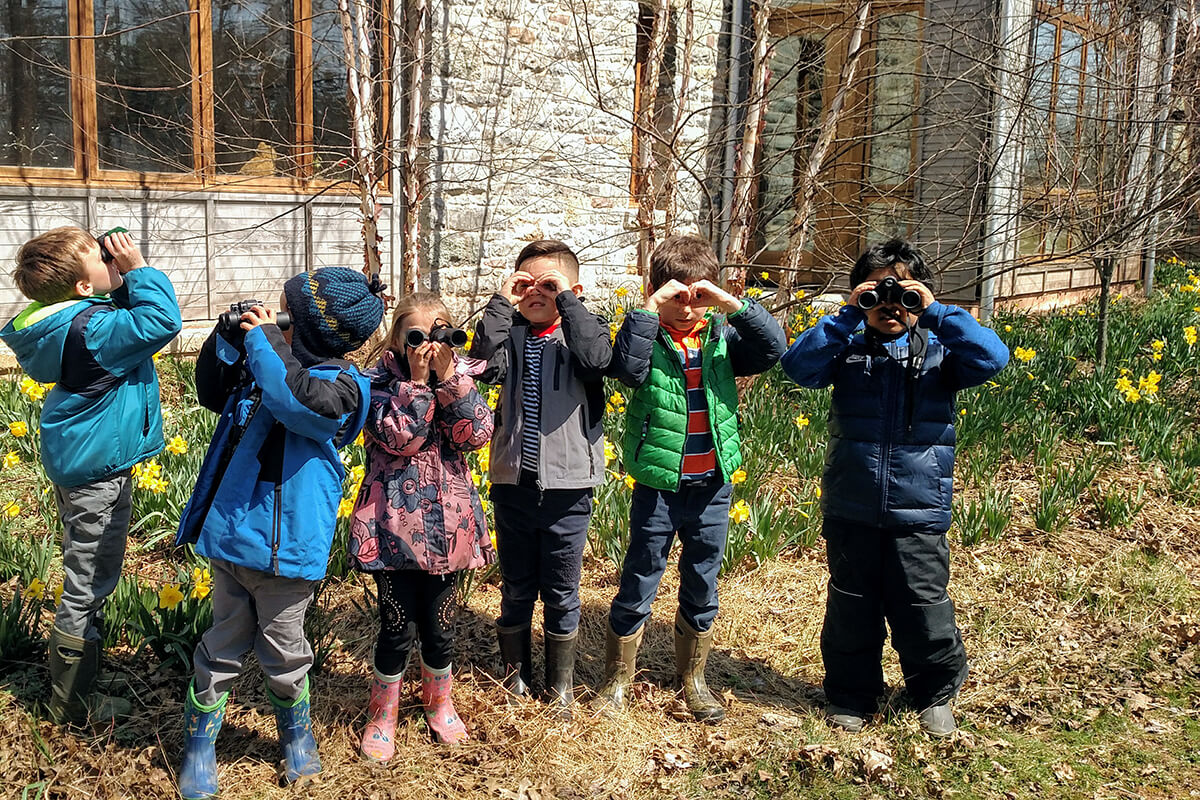
Interdependent Relationships
First graders are introduced to the complex construct of interdependent relationships in hands-on projects: Green Village and Community in the Woods. As students examine the interconnectedness between the natural world on our campus, and between people in our neighboring towns, the concept of interdependency becomes more concrete.
Questioning Assumptions
Fourth graders apply Systems Thinking in an integrated Identity Unit that fosters an appreciation of different perspectives, dismantles stereotypes, and strengthens skills needed to examine information and ideas with a critical mind.
Seeing the Big Picture
Fifth graders create Systems Thinking maps to better understand how decisions and actions influence outcomes. The exercise furthers understanding of unintended consequences, helping students see whole systems, rather than a sum pf parts.
Understanding Root Causes
History is more than events. Eighth graders use the Iceberg Model in Systems Thinking to further their analysis and understanding of the root causes of slavery in Colonial America.
Want to learn more about how Systems Thinking can empower your child learn? Contact Director of Enrollment Management Lisa VanderVeen at (908) 470-9500, ext. 1100 or via email.
More to Explore in Systems Thinking
Curriculum Spotlight: Social Studies & Service Learning
Learn more about our Lower School curriculum in our new blog series! First, we're diving into Willow's social studies program from grades Preschool to Grade 5. Our social studies curriculum is deeply connected to our school's mission, which emphasizes the importance...
How to Use Systems Thinking to Help Kids Solve Conflicts
Systems thinking is one of the most effective tools a teacher can use to address conflicts between students in the classroom. That’s because systems thinking helps us see the larger patterns of our behaviors and use that knowledge to solve problems. Instead of...
Request our ebook on Systems Thinking. We will email it to you immediately.

Director of Enrollment Management Lisa VanderVeen is here to help! Contact her at (908) 470-9500, ext. 1100 or via email







